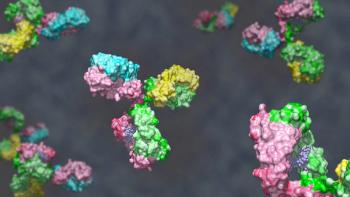All drugs are subjected to regulatory scrutiny during the full development lifecycle because, whichever way a drug is administered, it should always be effective and, most importantly, safe for the end-user. The requirement for safety, however, is ever more pressing for parenteral products, as these drugs are administered either directly into the bloodstream or into other delicate mucus membranes.
Focusing on parenteral drug manufacturing in particular, a critical step that ensures sterility and contaminant-free results is fill/finish. “Following drug development and production, fill/finish is the next step in the process—and crucial for getting the drug into the required container and making it ready for distribution,” confirms Andreas Mattern, vice-president Strategy and Global Product Management Pharma at Syntegon.
“Fill/finish manufacturing entails the process of aseptically filling and sealing products, in this case pharmaceutical products, ensuring that precision, sterility, and compliance with regulatory standards are meticulously followed,” concurs Carlos Quintero, director, Industry Services—PMMI (the Association for Packaging and Processing Technologies). “This is critical to ensure safety, efficacy, and shelf life.”
It is imperative for both bio/pharma manufacturers and any contract service providers, such as contract manufacturing organizations, to pay close attention to fill/finish processes, making sure there is the utmost sterility while also being robust and reliable, notes Mattern. “Filling and closing are especially demanding [because] the drug and its container come into contact with many different parts of equipment,” he adds. “To date, some of these processes still require manual intervention from operators, which makes them even more prone to contamination.”
Regulatory revisions
In 2022, a key regulatory revision was released—the European Union’s Good Manufacturing Practice Annex 1 revision (1)—that has far-reaching consequences for sterile filling operations, not just within the EU but for the global bio/pharma industry, Mattern reveals. “The specifications affect the manufacturing processes of all drugs imported into the EU,” he says.
“Among the major challenges of the new Annex 1 is the separation of the aseptic process area from the operator environment,” Mattern continues. “Pharmaceutical manufacturers therefore require at least restricted access barrier systems (RABS) for the approval of new products.”
As a result of these new regulatory requirements, there is now high demand for new machines and barrier technology upgrades, Mattern explains. “In the case of older machines, the question is whether to upgrade or invest in a completely new line with pre-installed barrier technology,” he says.
The revised Annex 1 also clearly sets out the requirements for air flow, Mattern specifies. “Unidirectional air flow is mandatory for open isolators and RABS in all class A areas and should not be interrupted between the air inlet and the open product. Yet this uninterrupted flow is not possible everywhere,” he says.
“A typical exception is the filling needle together with the filling needle holder, which must be positioned exactly above the open, sterilized packaging material in order to achieve loss-free filling,” Mattern states. “It is expected that these components are aerodynamically designed to minimize turbulences and that these items can be sterilized separately and installed aseptically.”
Technology advancements
As alluded to earlier, the revised regulatory requirements are leading to the need for new technologies to be used in fill/finish processes. A further elaboration on this matter is highlighted in the second chapter of Annex 1 (1), where automation and robotic systems are penned as appropriate technologies, confirms Mattern. “By using these technologies, gloves and human intervention in barrier systems can be reduced to an absolute minimum or even eliminated,” he says.
General manufacturing trends
Just a decade ago, the primary focus for bio/pharma research companies and manufacturers was large-batch blockbusters or traditional drugs, remarks Andreas Mattern, vice-president Strategy and Global Product Management Pharma at Syntegon. “Today, these medicines continue to make an important contribution to human health. Some of them, such as blood thinners, painkillers, or insulin, have become an indispensable part of the drugstore shelf. They are produced on lines in 24-hour operations,” he says. “Further new drugs in this realm (e.g., a high-dose injectable version of the incretin mimetic semaglutide) will continue to push the need for high-speed production.”
However, there is an apparent drive towards more niche areas. “Special and often personalized medications are now available to cure or at least delay some life-threatening illnesses. Cellular and molecular biotechnology has been accompanied by a revolution in pharmaceutical manufacturing: while high-speed, high-throughput lines used to be in the greatest demand, more and more pharmaceutical companies are now investing in the development and commercialization of small-volume medicines, which have very different production and filling requirements,” Mattern asserts.
“The increasing prevalence of advanced therapy medicinal products, such as cell and gene therapies and bioengineered tissue products, shows that the industry is specializing steadily,” Mattern continues. “These drugs are not manufactured on huge lines. Instead, the focus is on what is commonly known as small batch production.”
“The issue of gloves presents many challenges, which are acknowledged in separate paragraphs,” Mattern continues. “For example, gloves are to be additionally tested in operation during longer campaigns—which is not possible with the glove testing equipment used to date without risking the integrity of the sterile room. A switch to gloveless systems with robotics that handle these manipulations is already possible.”
Additionally, in conjunction with robotic filling lines, artificial intelligence (AI)-influenced line controls and automation will be able to offer faster scalability and increased flexibility for manufacturers, remarks Quintero. “Automation and AI are always accelerating the rate of precision, quality control, and efficiency of the fill and finish-seal process in manufacturing,” he says. “This has a huge impact on reducing contamination risks and the overall effectiveness and performance of the lines.”
What to expect next
Another pressing issue for the bio/pharma industry and its stakeholders is sustainability. More sustainable equipment and processes are needed across the board in bio/pharma manufacturing to ensure various reporting requirements can be met, which is something that technology providers, such as Syntegon, can help with, notes Mattern.
In terms of the sustainability of fill/finish manufacturing, Quintero anticipates a marked and quick change in the coming years. “Fill/finish manufacturing most likely will rapidly evolve into a zero-waste process and will incorporate more and more, sustainable renewable energy sources,” he states.
Furthermore, the drive towards automation of fill/finish processes will continue into the future as humans remain to be the main source of contamination, Mattern adds. “While drugs are becoming more and more complex, and as such expensive, separating pharmaceuticals from operators has been gaining attention throughout the industry for some years—a topic that is still becoming more pressing when considering small and even micro batch filling of highly potent substances,” he says. “Hence, automation and digitalization will play an increasingly crucial role.”
“While it is not easy to integrate what is known as ‘Industry 4.0’ into complete pharmaceutical manufacturing operations, many individual solutions are already available,” he summarizes. “The main question here is how to make use of the enormous amounts of data generated by fill/finish (and other pharmaceutical) processes every day.”
Reference
1. EC. Annex 1 Manufacture of Sterile Medicinal Products, EudraLex Volume 4, August 2022.
About the author
Felicity Thomas is the European/senior editor for BioPharm International.
Article details
BioPharm International®
Vol. 37, No. 3
March 2024
Pages: 28–29
Citation
When referring to this article, please cite it as Thomas, F. Automating the Future of Fill/Finish. BioPharm International, 2024, 37 (3) 28–29.





